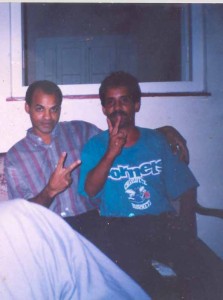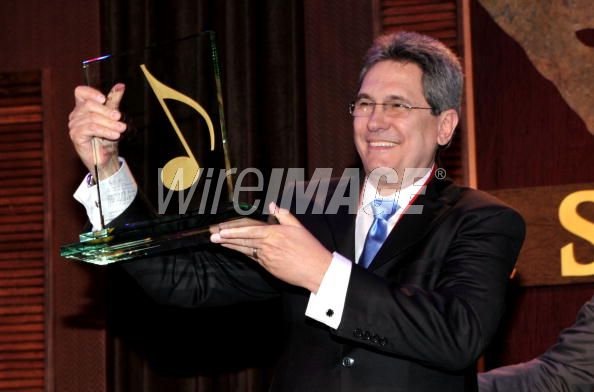Mister Editor of El Mundo America has put me in a tough spot. In a chain e-mail, he asked his colleagues throughout the continent to write about life during Holy Week in their respective countries. Fuck.
If there is anything I can brag about it is of not knowing anything about Holy Week. I will explain. I come from a communist family and was never baptized. I was born with the revolution of Fidel Castro, who, as you already know, always viewed priests with suspicion.
Especially if they were not on his side. Or were unsuccessful guerrillas, like the Colombian priest Camilo Torres, killed the first time he saw combat. Or were proponents of Liberation Theology, as was the custom of the Brazilians Leonardo Boff and Frei Betto.
My ignorance of Catholicism I owe basically to my family, who never took me to a church as a child. But also to the anachronistic ideology where I was educated and became a man, and where to believe in God was a waste of time.
The revolution needed men of a new type. Those who hated religion and Yankee imperialism. Thank God, I didn’t take the bait. The artificial unanimity of opinions, the dangerous entente with the former USSR, the guerrilla focus of so many people, military mobilizations and obedience to their leader, were never to my liking.
Even though in recent years, many Cubans began to fill the churches, especially after the visit of Pope John Paul II in January 1998, Cuba does not have a sense of festivity during Holy Week like in Spain, Mexico, Peru or Colombia.
I grew up admiring the U.S. basketball players Michael Jordan and Larry Bird. On video, I saw the fantastic game of the “Vulture’s Cohort” of Real Madrid of the 80s. And of course, I liked the great guys from Liverpool. But religion was always in its infancy. It is one of the subjects that I didn’t pursue.
The first time I read the Bible was at age 20 when I was drafted into military service. A friend lent it to me saying, “You read a lot but you haven’t read the principal book of life.” And it was important for me. But I was still ignorant about Easter and Holy Week. I thought it was a practice of the nations that believe in Islam.
In the Cuba of olive green, the weeks I knew about were those of defense, or the many weeks about hatred, which in a cyclical way the government generates against people, presidents, or countries that criticize the state of affairs in the island.
Speaking frankly, already being a man, a free journalist and a critic of the absurd way the Castro brothers govern destinies, Holy Week remained a matter of little importance to me. I remember that foreign friends, visiting Havana in the months of March and April, told me about the celebration of Holy Week in their homelands. It went in one ear and out the other.
I think that maybe something exists. But I have grown up in a country and a family where religion “was a distant piano playing a long way away on the horizon,” in the words of the Cuban writer Eliseo Alberto.
Not only do I not know about Catholicism, I am also a neophyte in the field of Afro-Cuban beliefs. I am not happy with my ignorance. I would have liked to have faith in a religion. I am going for the easy route. At least, I know who to blame.
My mother, a political refugee in Switzerland, in her youth had no attachment to religion. Her parents, my grandparents, were atheists. In the first 30 years of revolution, Fidel Castro always did everything possible so that people would be ignorant of faith.
It is never too late. For an aunt, who was a devotee of St. Lazarus, and before she died asked her “not to abandon the old Lazarus”, she now lights a candle the day that Cubans revere him, December 17. Before leaving Cuba, under the mattress of my bed, she left me a talisman and a picture of the saint of beggars.
Although I consider myself agnostic, I am teaching my daughter Melany to respect and understand Catholicism. She was baptized at a few months old and now, at 7, before bed I read to her from a child’s Bible that they use in catechism classes.
I do not know how to pray, but at night I pray to the Lord for the situation in my country to change; that the political prisoners can return to their homes; that fate does not require me to go to prison for writing what I think; that I see my mother before she dies in her forced exile, and that democracy and respect for differences might be possible in Cuba.
When one crosses the barrier of 40 years of age, it is sad not having faith. Either way, Mister, I don’t know what I’m going to write about Holy Week.
Iván García
Photograph: La Virgen del Camino is located in a park of the same name where two of the busiest roads of Havana meet, the Causeway and Causeway Luyano San Miguel del Padrón, on the outskirts of the capital. The work is by Cuban sculptor, Rita Longa (1912-2000).
Translated by: CIMF

 Carlos Serpa Maceira, 43, a freelance journalist born in the former Isla de Pinos, now Isla de la Juventud, is one of the leading communicators of the activities of The Ladies in White. More than a few times the taking of photographs or the writing of notes has ended up with his being dragged along the ground by a mob, at times with physical abuse.
Carlos Serpa Maceira, 43, a freelance journalist born in the former Isla de Pinos, now Isla de la Juventud, is one of the leading communicators of the activities of The Ladies in White. More than a few times the taking of photographs or the writing of notes has ended up with his being dragged along the ground by a mob, at times with physical abuse.